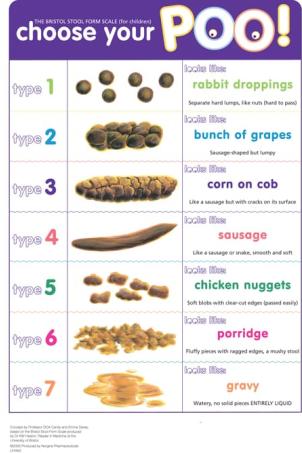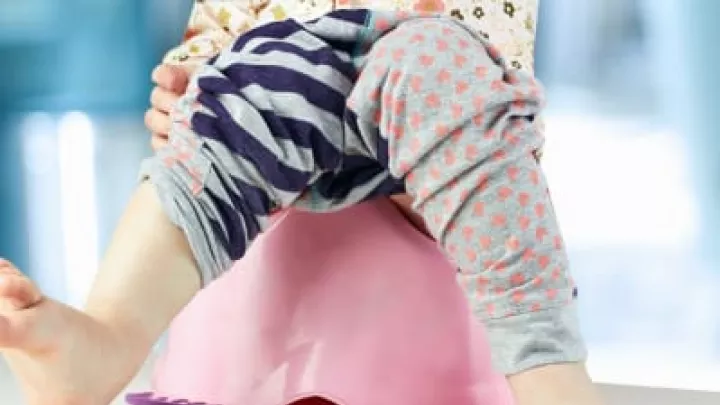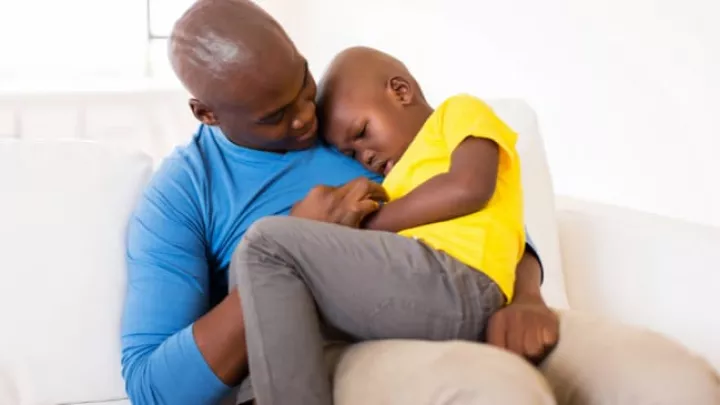
Constipation: How You Can Help Your Child
Constipation is a problem that affects many children. It’s a disruption in your child’s normal pooping pattern, which causes decreased frequency of bowel movements that may be hard, dry or painful to pass. Sometimes this issue is temporary, but it can also be chronic for some children. I have learned that a little poop can cause a lot of problems. Believe it or not, children sometimes end up in the emergency room because constipation can cause such severe abdominal pain that is can be mistaken for something more serious. As a nurse practitioner in the Division of Pediatric Urology at Children’s Hospital Los Angeles, I care for children who have trouble peeing or show urine leakage due to severe constipation. In this blog post I will discuss common causes of constipation and how to help your child combat constipation before it leads to bigger problems.
What Causes Constipation? (Tweet this)

Usually constipation is not a serious problem but it’s certainly frustrating. Here is a list of some of the main causes:
- Eating foods low in fiber, like processed and fast foods (not eating enough fruits and vegetables). Sometimes intolerance to dairy products can cause constipation too.
- Not drinking enough water. When the body becomes dehydrated, the intestine will steal water from the stool to help hydrate the body. This makes the stool very hard and dry, which can make going to the bathroom painful.
- Stool holding behavior, for example, some children are afraid to use the toilet or fear the discomfort related with stooling. Other children don’t poop because they don’t want to stop playing to go to the bathroom.
- Behavioral issues like a child’s desire for control can make them want to hold in their stool.
- Short-term illness can cause diarrhea and often constipation can occur after.
- Lack of physical activity, which slows down the digestive process.
- Changes in normal routine, such as going on vacation or sleeping somewhere new can disrupt routines and usual bowel patterns.
- Medications, such as narcotics, antidepressants or certain vitamins (iron can cause constipation). Talk to your child’s pediatrician if you think this may be an issue for your child.
- Serious medical conditions, such as Hirschprung’s disease, celiac disease, hypothyroidism or neurological issues. Talk to your children’s pediatrician or a pediatric gastrointestinal (GI) specialist if these are concerns applicable to your child.
Signs and Symptoms of Constipation
If your child is constipated, they may experience some or all of these:
- Having to push hard to pass a stool.
- Abdominal pain that is relieved by passing a stool.
- Abdominal bloating and feeling of fullness.
- Painful bowel movements, possibly associated with blood on or around the stool or on the tissue paper.
- Poop that is very large and hard or that looks like individual or clumped little round balls (see diagram below).
- Stool leakage in the underwear. Sometimes children have hard bowel movements that can be followed by very loose stool, perhaps resembling diarrhea, or show poop smears in the underwear. This is caused by stool leaking around hard, compacted stool that has nowhere to go.” This is a more complicated problem called encopresis.

Help Your Child Combat Constipation (Tweet this)
Prevention is key! One of the first steps to prevent constipation from affecting your child is increase the amount of fiber in their diet. The best sources of fiber are fruits, veggies, legumes and oats, which include pears, berries, artichokes, avocado, broccoli, beans, lentils and oatmeal. Other ways to prevent constipation include:
- Drinking plenty of water each day. Generally, school age children require about four glasses of water per day at minimum. Ask your child’s pediatrician what is best for your child.
- Get your child on a stooling regimen. Kids are excellent at holding both their pee and poop, generally because they don’t want to take the time out of playing to use the restroom. Sound familiar? Try to establish a specific time each day when your child has to sit on the toilet to try to pass a bowel movement. The best time to do this is about 20-30 minutes after a meal when the colon naturally contracts to pass a stool. It seems unrealistic to get a child on the potty before rushing out to school in the morning, and we know they won’t do it at school, so after dinner is generally ideal.
- Remind your child that holding their poop causes pain and it’s better to let it out.
- Make sure our child stays active. Make it a priority to encourage your child to play and run around outside, under adult supervision.
- Talk to your child’s pediatrician. Sometimes constipation can be a sign of an underlying health problem. At other times dietary and behavioral interventions are not enough and kids need medication to help them regulate their bowel movements. Your pediatrician is the best source to discuss this.
If your child is already experiencing constipation, there are many ways to manage mild and severe constipation. Your child’s pediatrician may recommend a “clean out” to empty the colon and start at “ground zero,” and then place the child on a daily maintenance regimen with stool softeners. There is a lot of variety of over-the-counter stool softeners and laxatives available, which can be overwhelming when you are in the pharmacy aisle. The best thing to do is talk to your child’s pediatrician to see what they recommend.
I hope these tips offer you and your child some relief and that constipation won’t be an (painful) issue in the future.


